Learning how to paint values is the most important fundamental you need to know to create realistic art. If you want to paint without limitations, then you need to understand how to paint values.
At Evolve Artist, we teach student artists a simple method for creating realistic paintings and how to paint values is the first of four fundamentals taught in the Evolve Artist method.
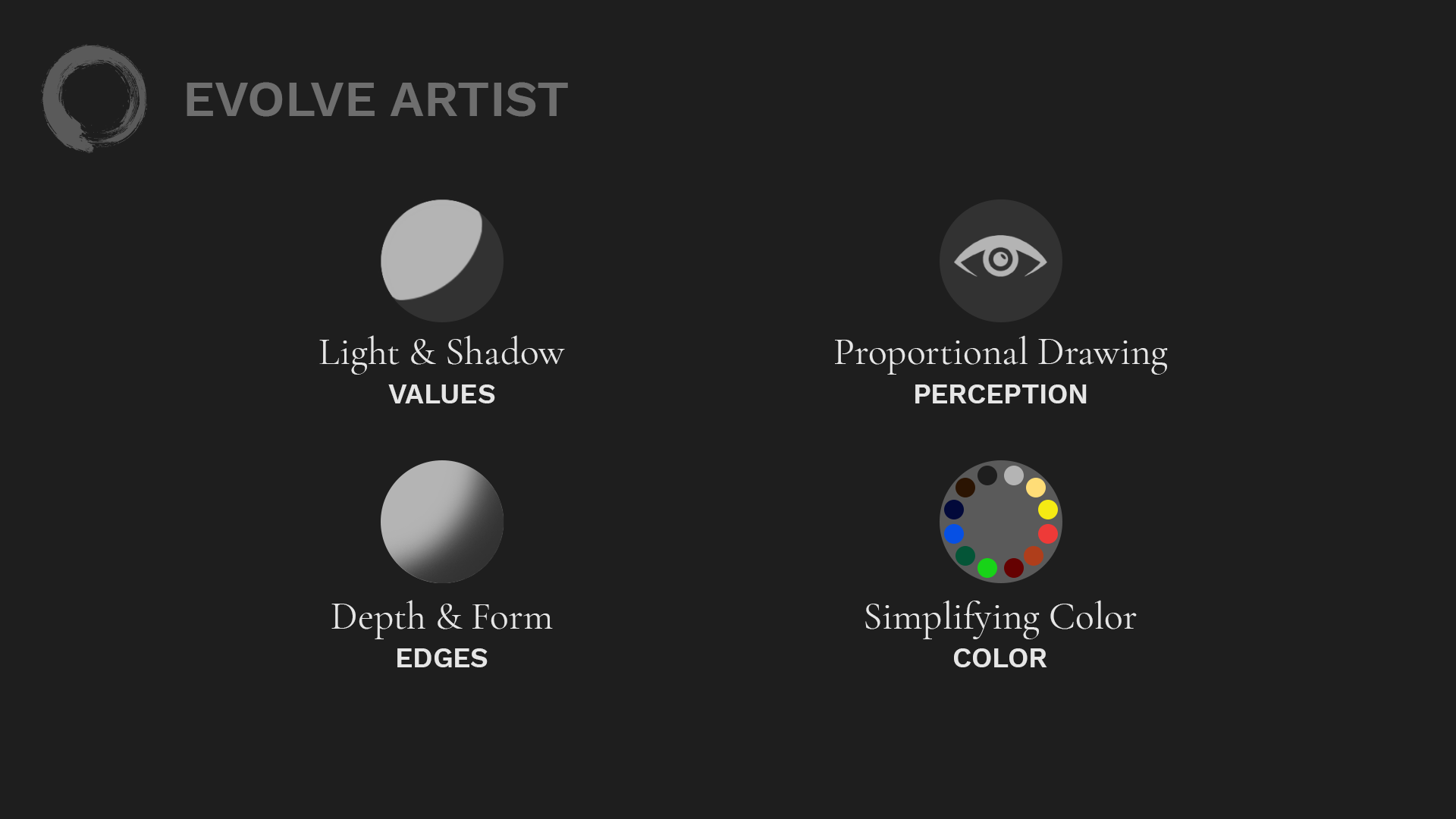
Value is the first fundamental of art taught in the Evolve Artist method.

To create art without limitations, you need to understand values.
What is value?
Value is how light or how dark something is. It has two determining factors:
- what it's made of and
- how the light interacts with it.
How to Paint Values to Create Form: White Cube, Gray Cube
When we look at the following image, our brains immediately tell us that we're looking at a white cube and a gray cube.
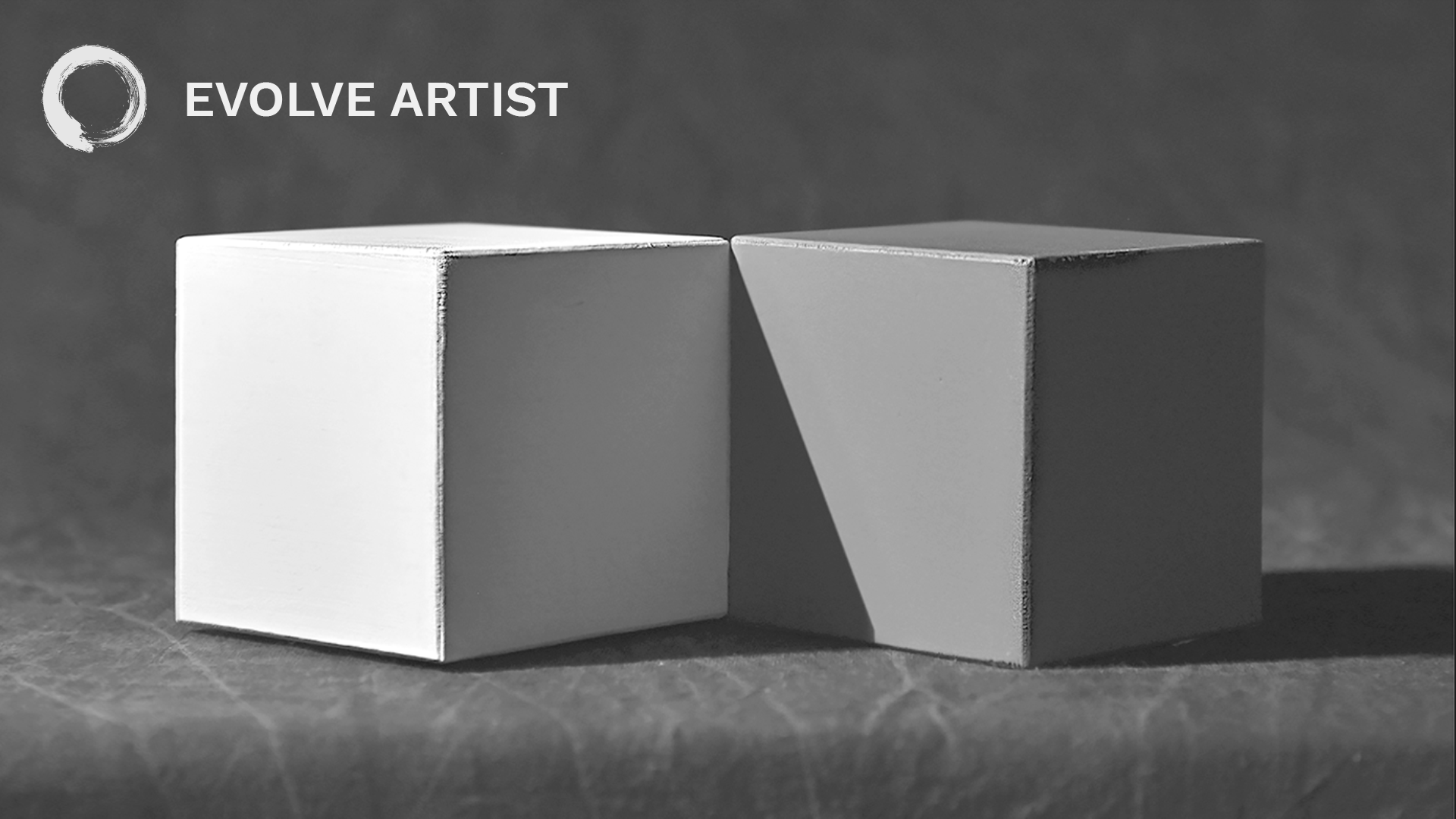
At first glance, this image looks like a white cube and a gray cube.
Now, look at this image, this time without the light shining on it:

Without values, images lack form.
As you can see, these images no longer look like cubes. They look like flat hexagons.

Values are essential in creating form in your paintings.
Without that second component of value, "how the light interacts with it," we can’t recognize the object that we want to create. That's how important values are.
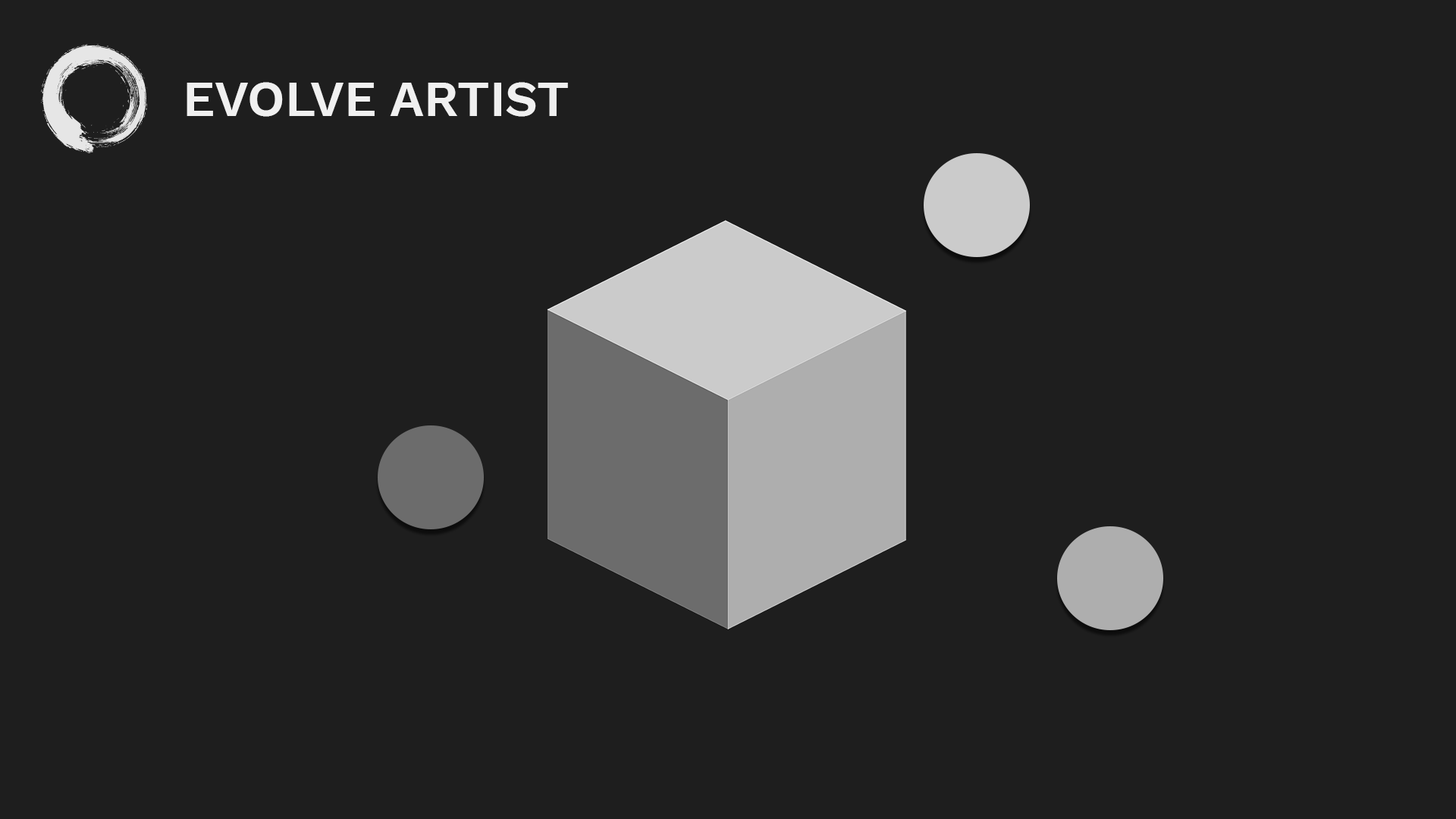
The “white” cube in this image is, in reality, made up of three values.
Your brain wants to tell you that the cube on the left is "white." In reality, it is made up of three values.

The values in this image cause us to perceive these cubes as having form.
If you look closely at the “white” cube, you can see how dark the shadow is on the right plane. And yet, our brains still tell us that the whole cube is white. That's pretty incredible. When our brains process these values, they perceive these cubes as having form (in other words, they don't look flat anymore). The cubes have the illusion of looking 3-dimensional, and in order to learn how we can create that illusion ourselves, we need to understand how to see values.
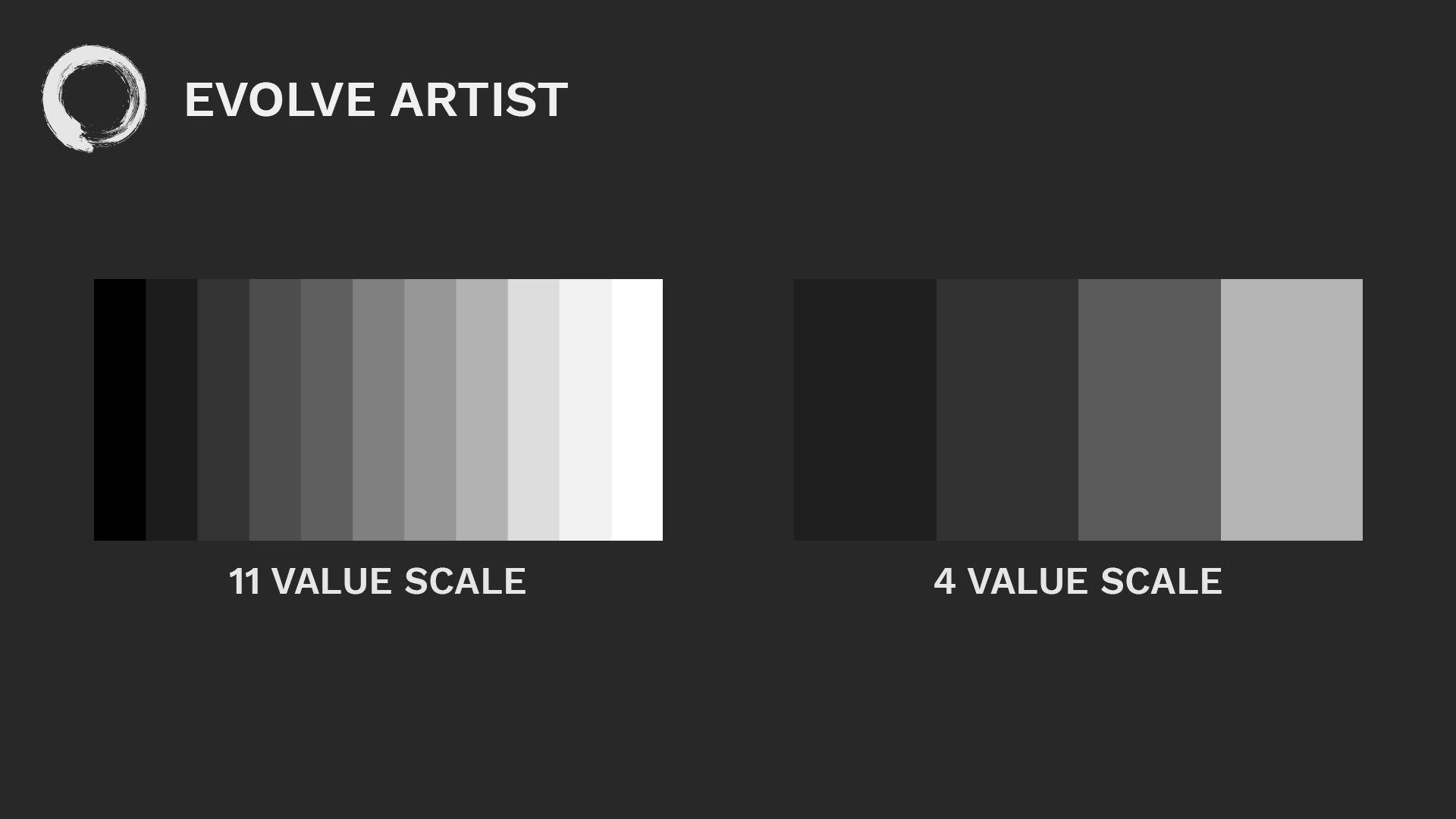
Evolve Artist’s Four-Value Scale
Evolve Artist’s Four-Value Scale
Artists will often use a value scale for matching their values in art. You may have seen a 9-value scale, a 10-value scale, or 11-value scale, but that's usually overkill for when you're learning. It over-complicates the process if you want to gain a fundamental understanding of values. Here's why: the mark of a master is not in how complicated they make it, but in how simple they make it seem. We are much better off starting with a simpler, four-value scale, and this is how Evolve teaches.
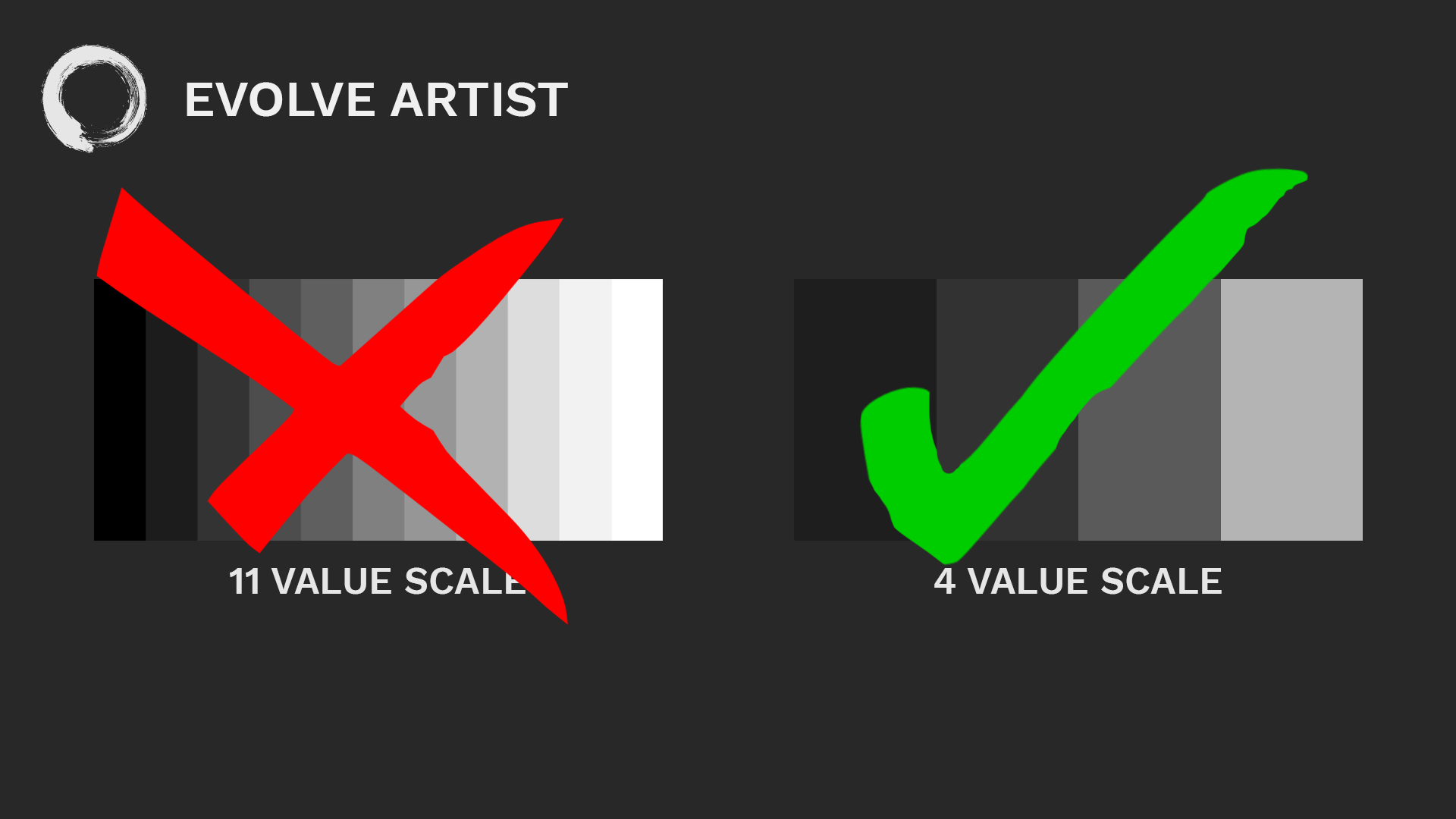
Evolve’s Four-Value scale simplifies value.
In reality, there is an infinite range of values and our eyes can see about a thousand steps of those values. The value scale simplifies this infinite range into just a few components.
How to See and Simplify Values: Light & Shadow
You might be wondering, “How do we match all of those values if we only have four values to pick from?” Answer: we don't. This is essential. We don't match value to value. If we did, we would just be complicating the process again, trying to match each individual value. With only four values to choose from, we have no choice but to simplify, processing the values with a greater understanding of how this all works. Imagine looking at someone's face for all of its beauty and complexity and saying, "Oh, that's simple. There's nothing to it." That is mastery. That is understanding. And that's what you want to pursue so that you can create art without limitations.
Look at the kind of work that you can create with a simple understanding of how to paint values:
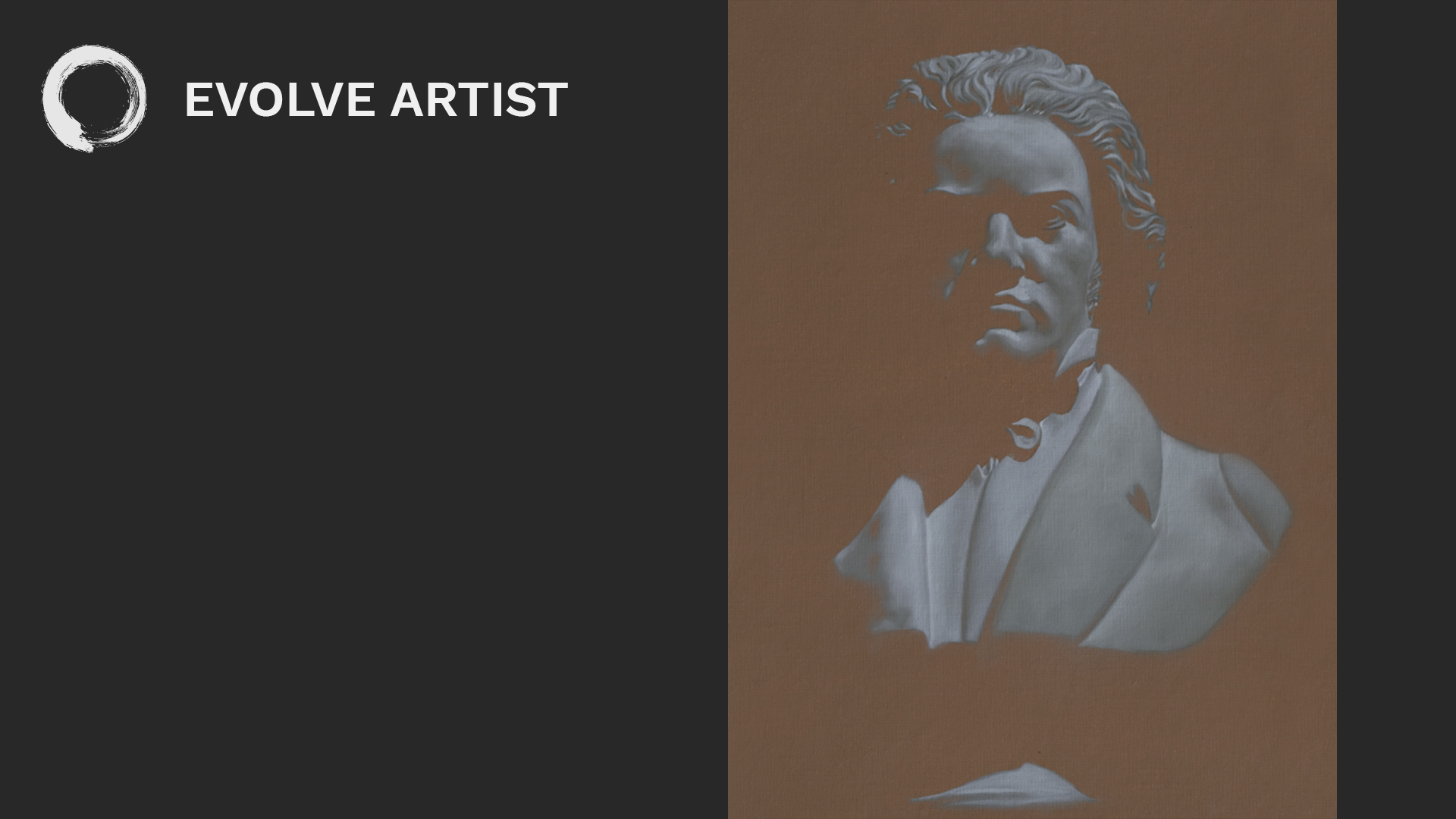
A painting by a student of Evolve Artist using vacant shadows.
This is a "vacant shadows" painting. Look at how all of these shadows are just one value. It's just the tone of the canvas and all of the lights have been painted in. That is simplicity. And you cannot do that without a true understanding of values.
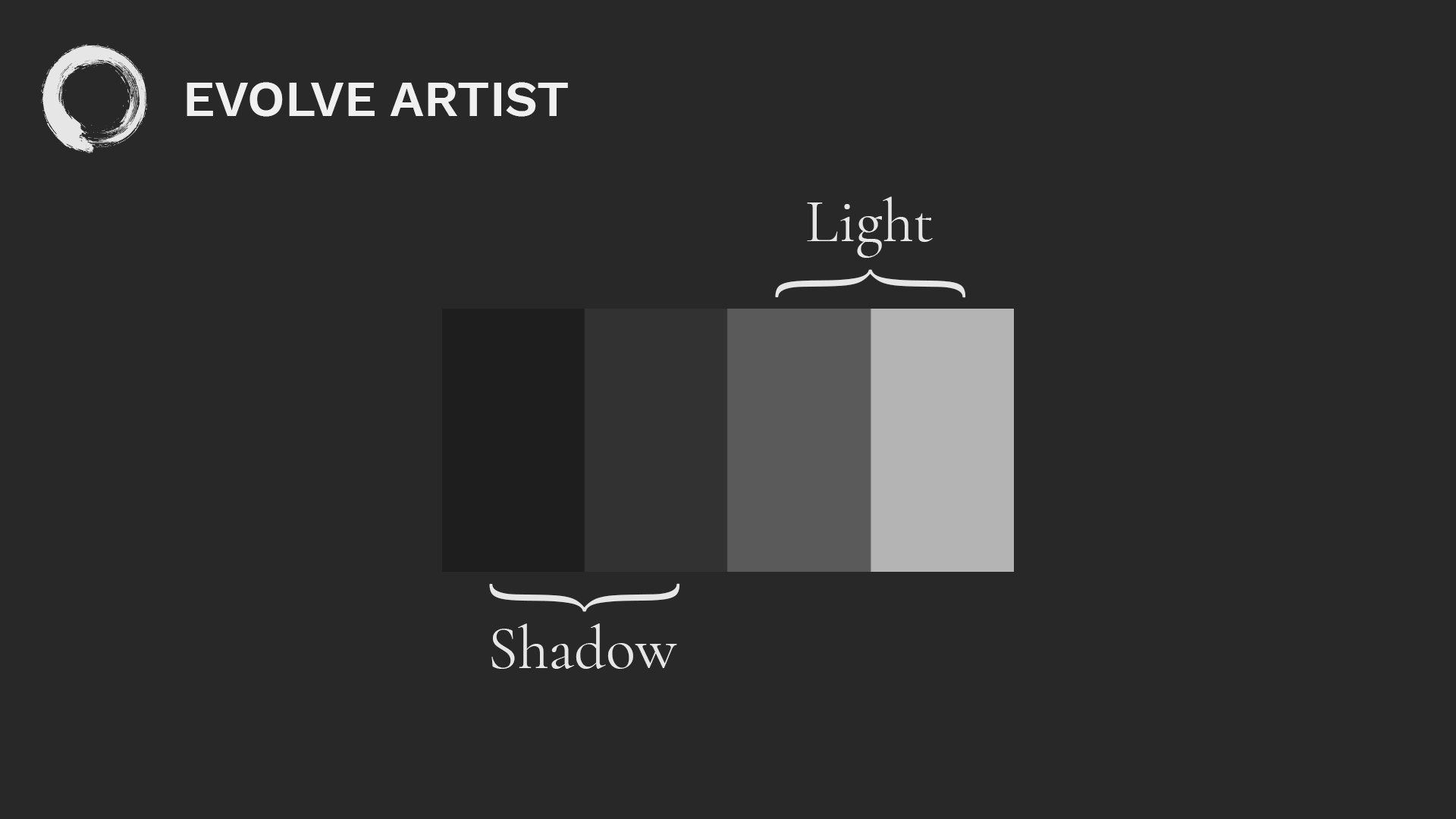
The four-value scale assigns two values for shadow and two values for light.
How to Paint Values to Capture Form
So, how do you simplify values? Remember that second component of value: "how light interacts with it." Light and shadow play a critical role in determining the value of a subject.

Simplify values by breaking it down into light and shadows.
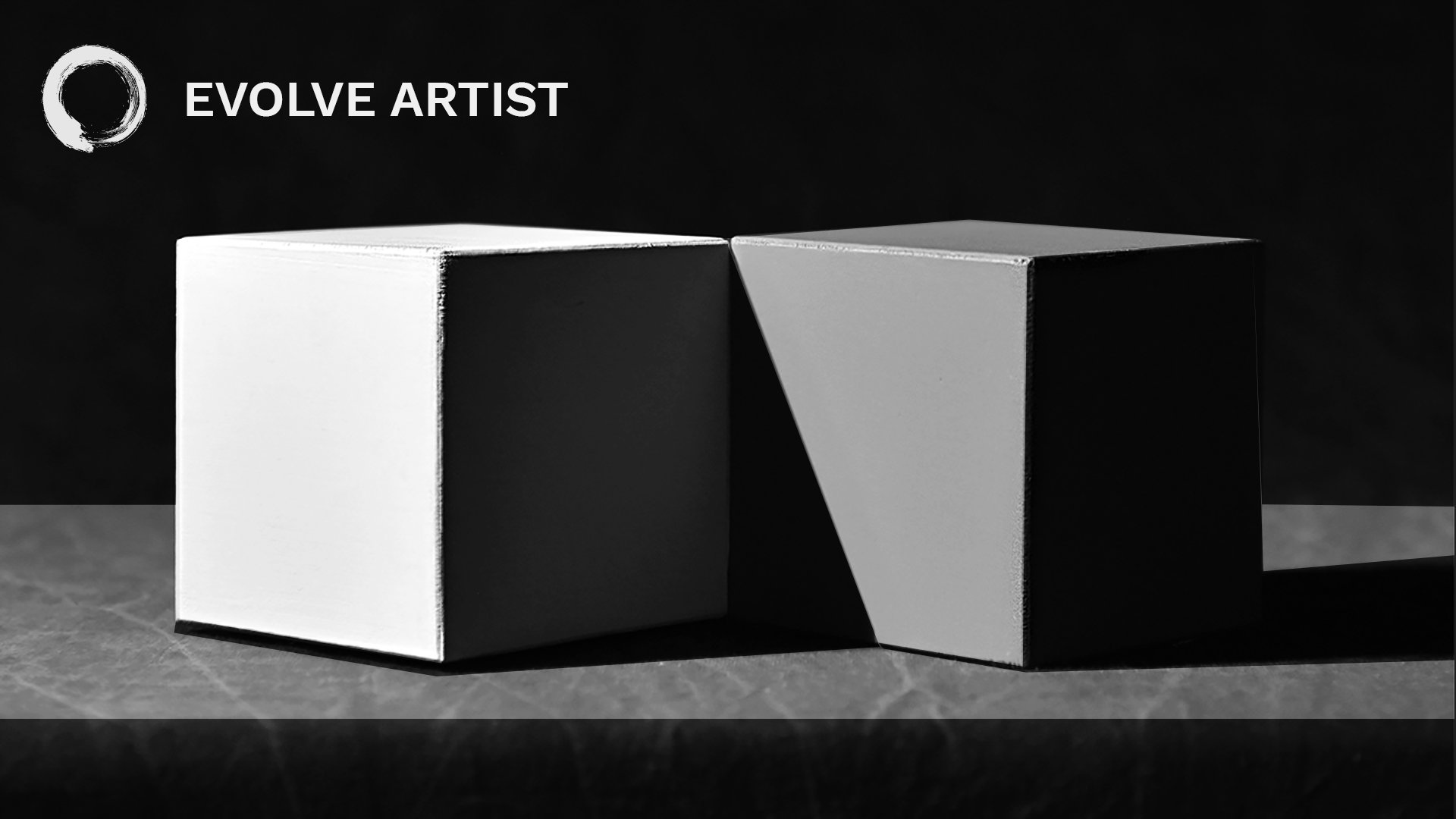
In this image, the shadows have been darkened to show the separation between light and shadow.
Start by breaking your reference image down into light and shadow and make it so that you can only assign the two darkest values to your shadows and the two lightest values to your lights.
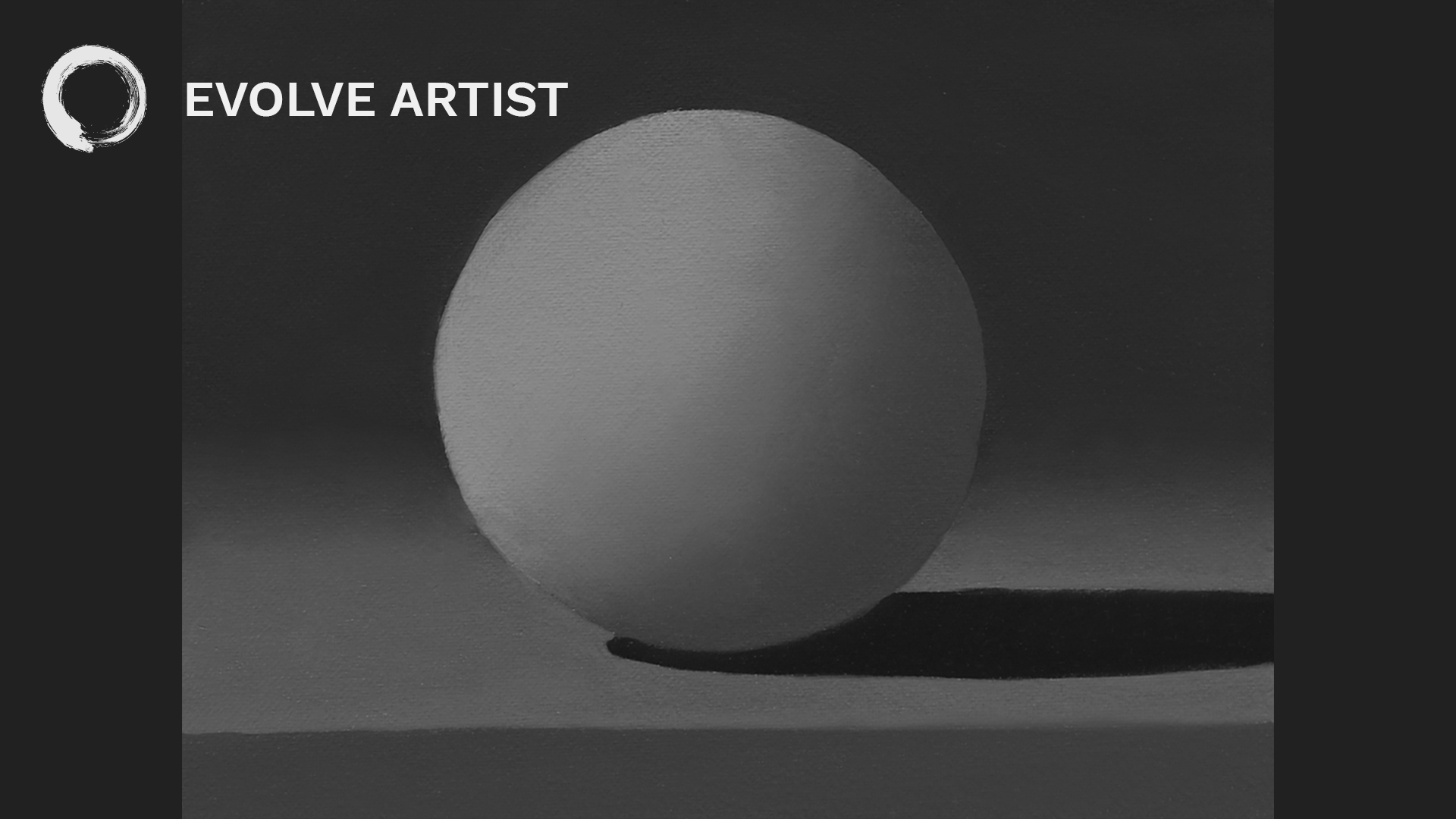
Evolve Artist students’ work using the four-value scale.
The paintings above are the results of our students’ work in the Evolve program, painting with only four values. See how three-dimensional they look? Then, once you start adding values for highlights and reflections, you're going to be amazed with the level of realism that you can put into your work. In summary, if you want to gain a fundamental understanding of value, simplify your reference image into only four values. Simplicity creates powerful impressions.
How to Paint Values to Create Depth
Now you can also use values to create depth--to create a depth of field, to make something feel like it's receding off into the distance, and to make something else feel like it's coming forward. This photo is an example:
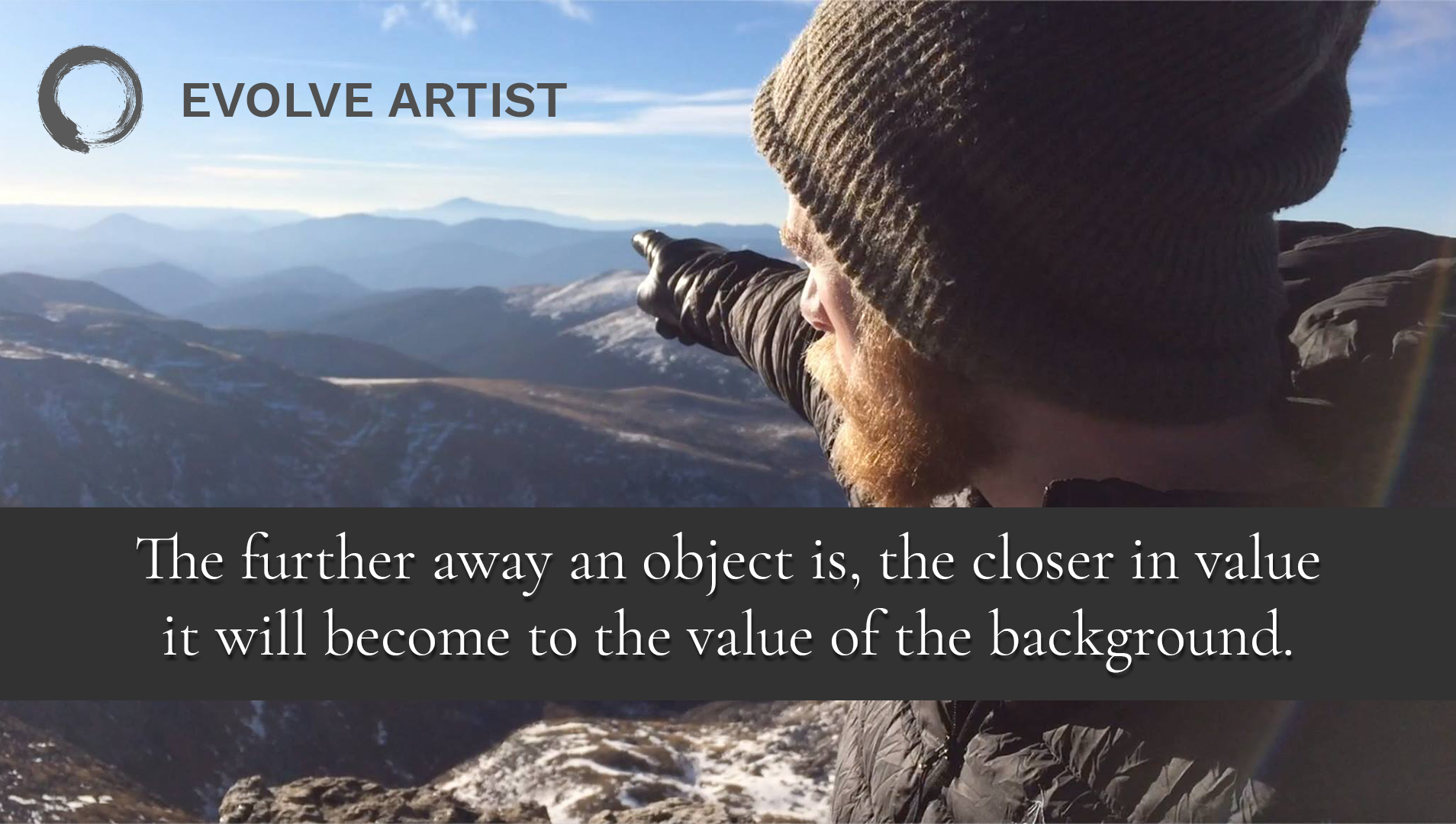
Evolve Artist’s Daniel Folta in a photo showing how depth is created by value.
When you look at the mountains in this photo, you can see how they get lighter and lighter as they recede into the distance. They're becoming lighter because they are becoming more like the sky. Think about the amount of atmosphere in between the camera and that mountain way in the back. What we're seeing here is that the further away an object is, it will become closer in value to the background or the overall environment that it's in. The second thing we can learn from this is that objects that have more contrast grab our attention. They pull more forward while things that have less contrast recede into the distance.
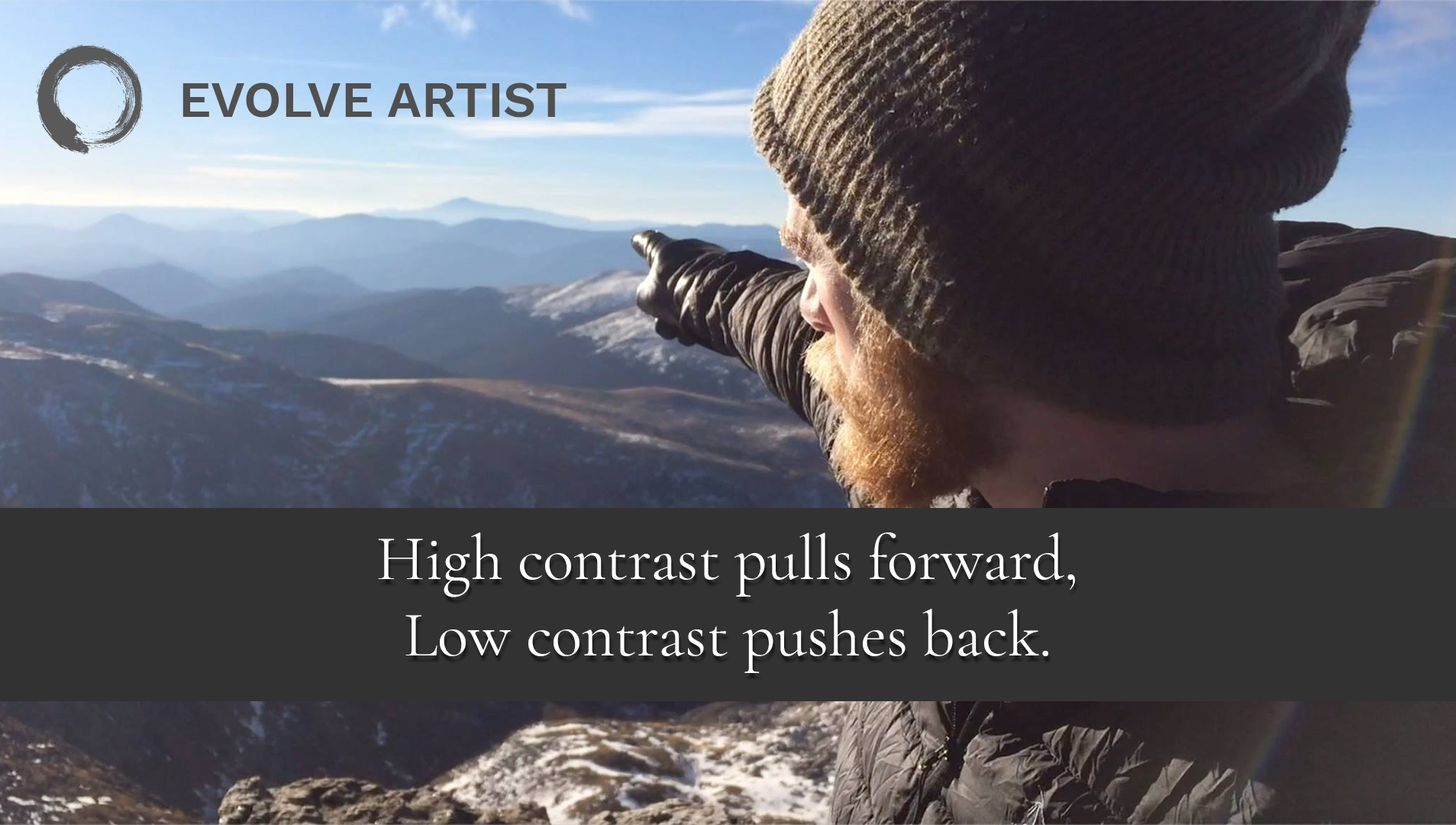
Objects with less contrast recede into the distance.
So how do we apply these concepts of depth of field into our paintings? Look at this painting, The Bohemian, by Bouguereau:
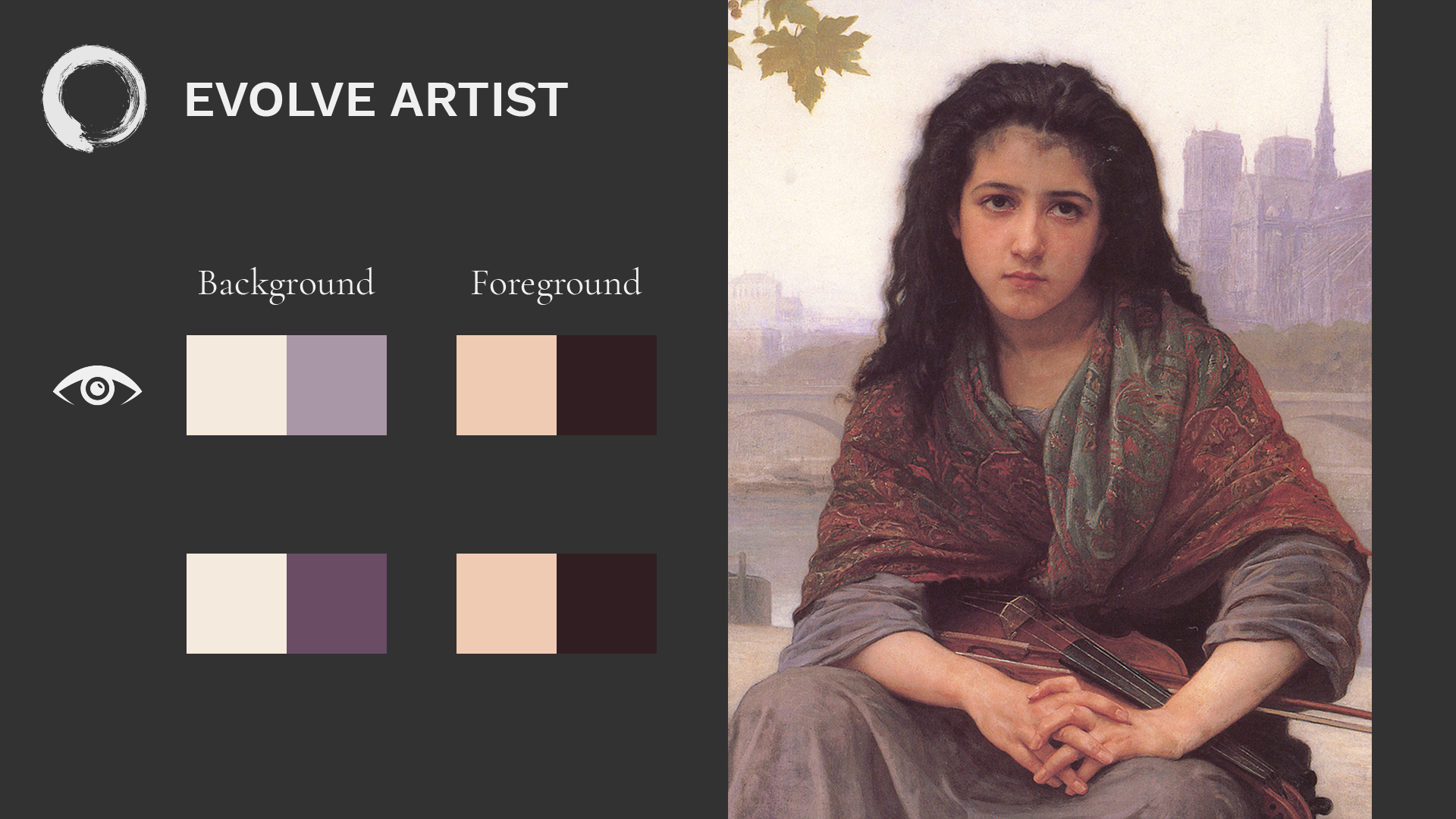
Dark and light values in the foreground and background of Bouguereau’s The Bohemian.
Now, see how it is broken up into its background and its foreground. Let’s take the brightest and darkest values in the background and put them next to each other and also do the same for the foreground.
Can you see the difference in contrast between the foreground and background? The foreground has high contrast and the background has low contrast. Not only are the buildings small, but the values are telling us that they are far off in the distance and that the girl is up front.
If I took that background and without increasing the size of the buildings, just increased the contrast, look at how it pulls forward:

Increased contrast in the background of Bouguereau’s The Bohemian alters the focal point of the painting.
The building is now competing for attention with the girl's face.
When we go back to what Bouguereau had originally done, you can see how the focus is all on the girl. Our eyes can relax and we can soak in this painting because of that nice value relationship.
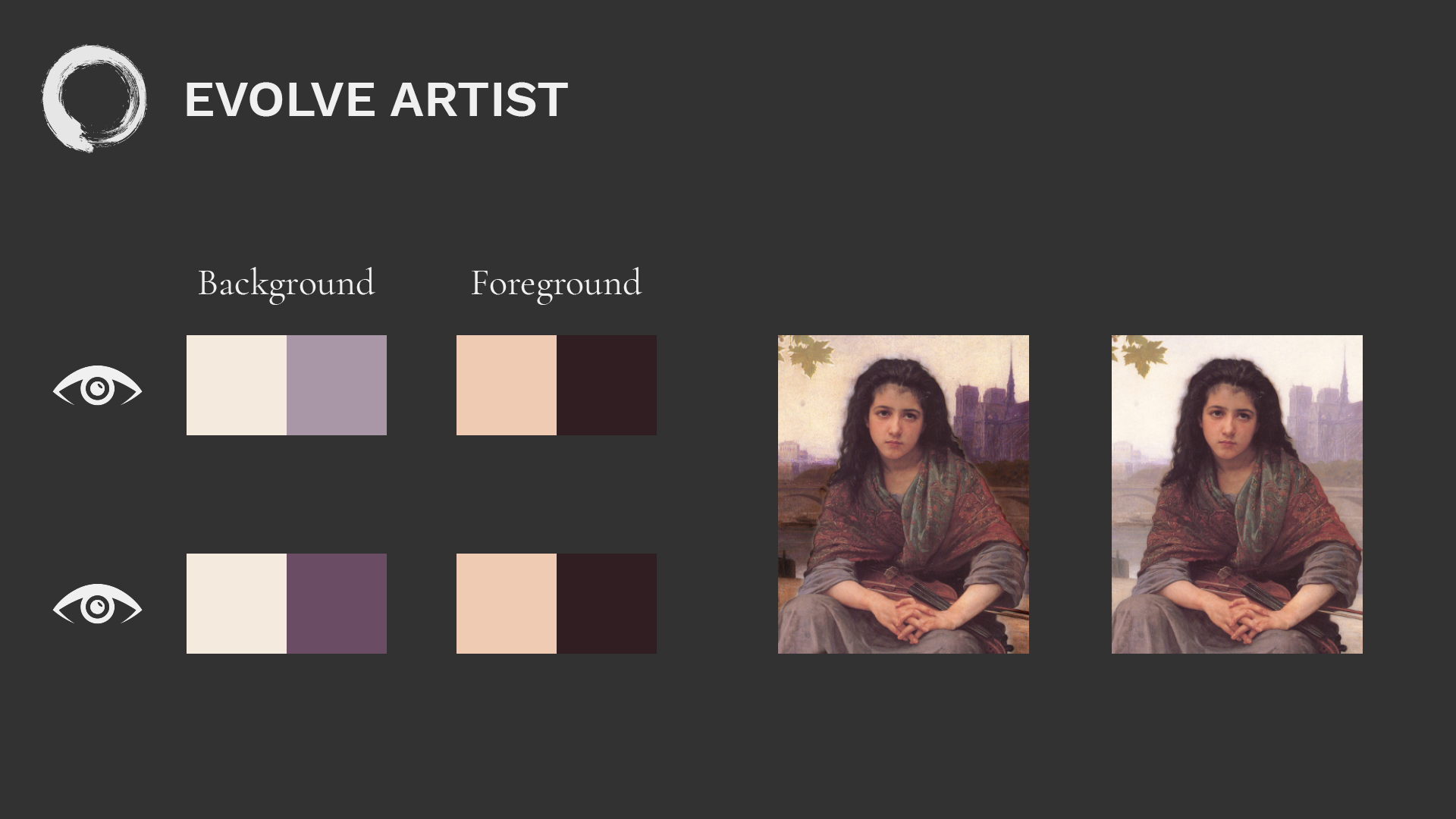
A comparison of varied contrast in the background of Bouguereau’s The Bohemian.
If you're struggling to see this painting for its values, because of the color, here it is in black and white:
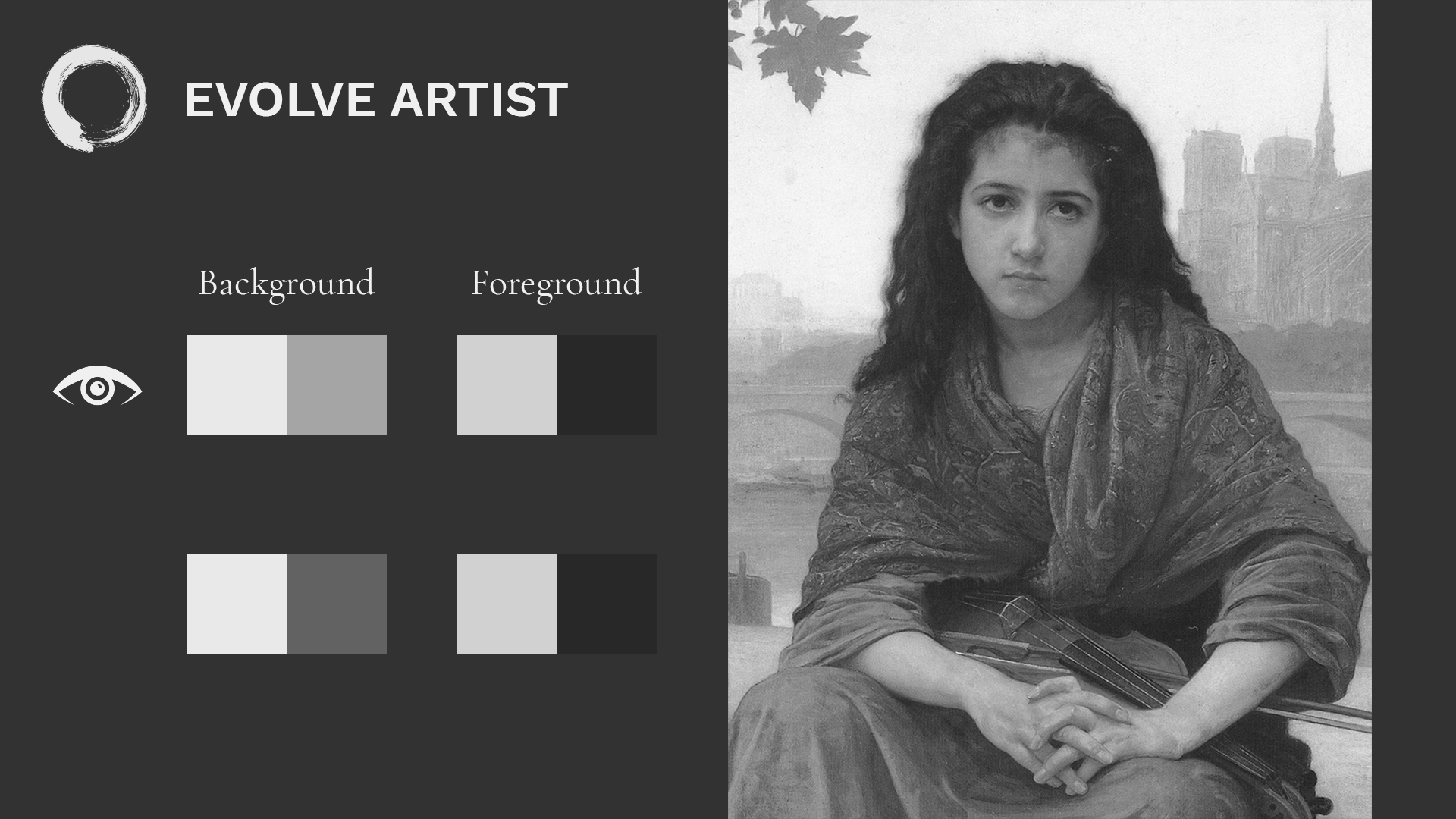
The use of values changes the perception of depth in an image as seen here in Bouguereau’s The Bohemian in black and white.
You can see how the buildings fall away as the values become more muted and the contrast is decreased the further you look into the background.
Conclusion
There's your crash course on values, the first of the four fundamentals that we teach in the Evolve Artist method. If you found this post insightful and you want to get more content like this, then check us out on YouTube and follow us on Instagram.
If you are serious about wanting pro-level art skills, then check out Evolve Artist. We have a program that is designed for you. Join Evolve HERE.
Happy painting!
